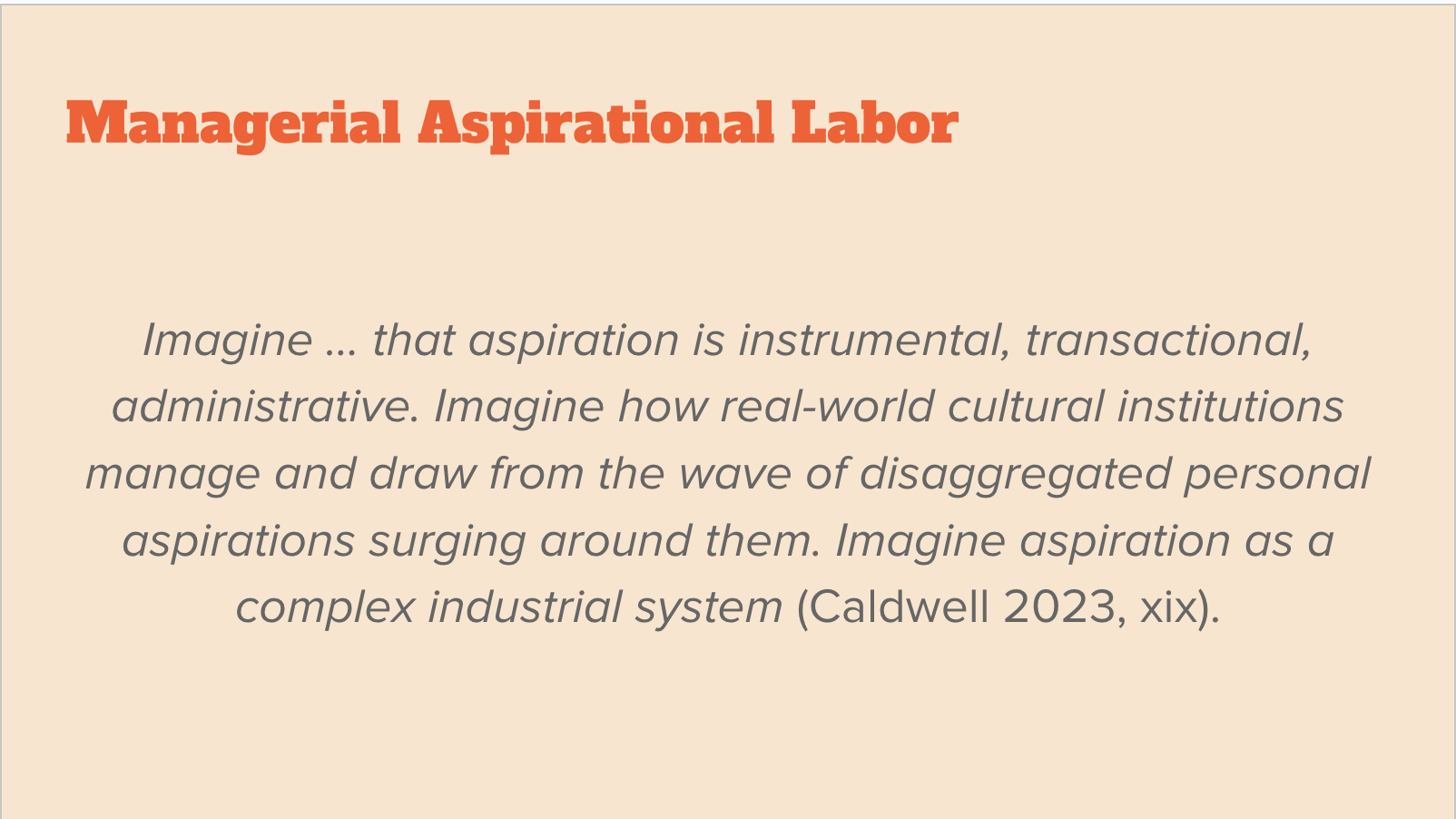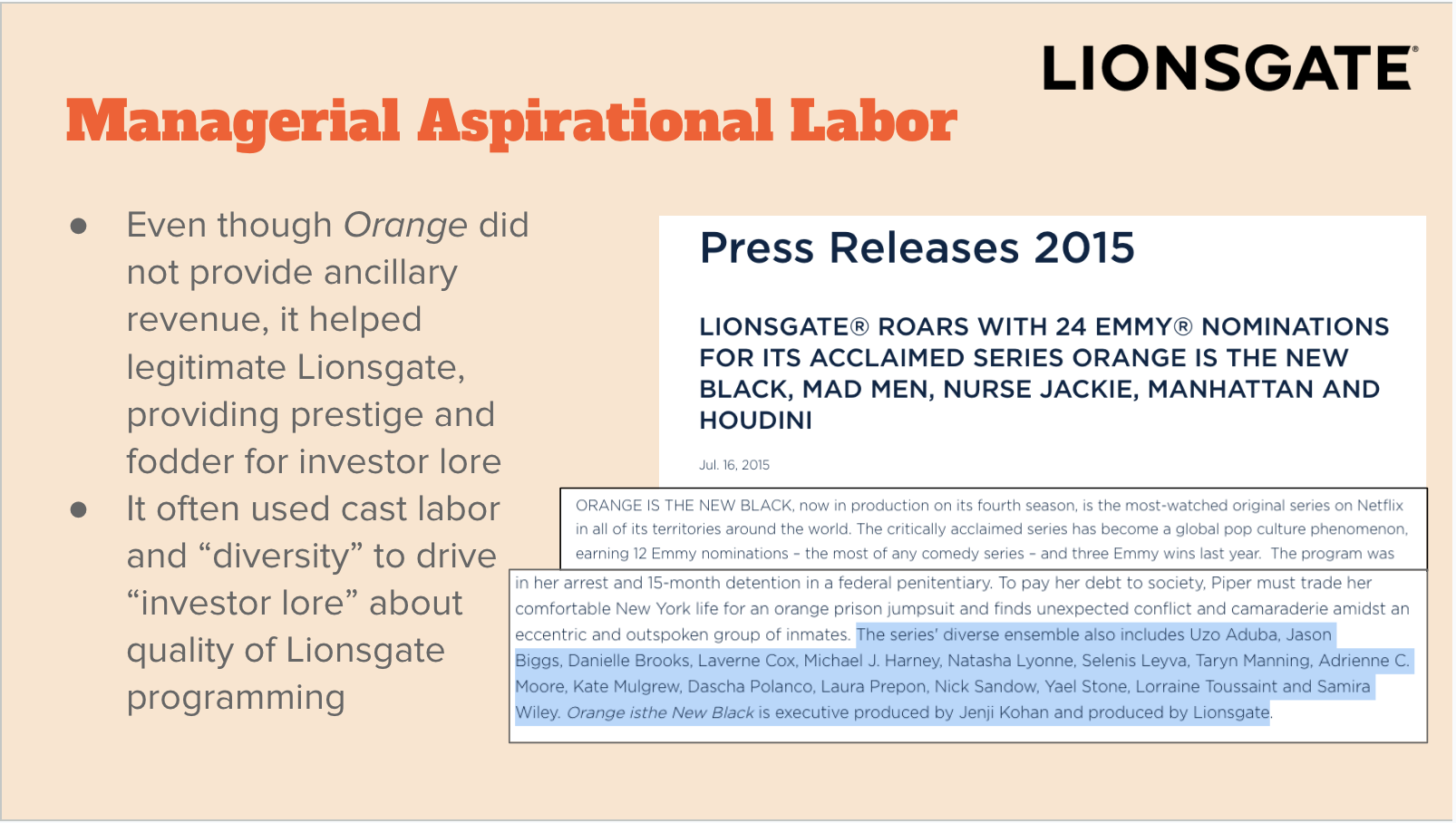A Multi-level Analysis of Aspirational Labor: Working Actors’ Promotional Practices and Speculative Management Cultures in the U.S. Television Industry
Media Industry Conference, April 2024 (Co-presented with Kristina Brüning)
Abstract: This paper explores the intricate dynamics of aspirational labor in contemporary U.S. media industries, using the 2023 SAG-AFTRA strike and the series Orange is the New Black (Netflix, 2013–2019) as a case study. Aspirational labor––the pursuit of doing what one loves in the hopes of future rewards––has become a prevalent practice, particularly among social media users seeking fame and financial success (Duffy 2017). Our analysis reveals that aspirational labor permeates the TV industry as a complex and multifaceted phenomenon that affects both creative labor and management cultures.
During the SAG-AFTRA strike, OITNB cast members took to social media to shed light on the challenges facing Hollywood talent, particularly their dwindling residuals in the streaming era (Schulman 2023). In this way, working actors like OITNB’s Kimiko Glenn disrupted social media’s normative function in contemporary converging media industries. Instead of promoting herself or her projects, Glenn used Instagram to expose how this type of aspirational labor adds to her vulnerability and precarity as a working actor. Discourse analysis of Glenn’s Instagram posts in the days following the strike authorization vote reveals the gendered expectation that working actors engage in additional, unpaid labor to project a glamorous, successful image and highlights the affective and material ramifications for female actors.
The predominantly male management cultures at Lionsgate and Netflix (the producer and distributor of the program, respectively) also engage in a form of speculative work dependent that “presents the future.” Examining corporate documents, we argue television’s business model in the pre-streaming era was itself an expression of aspirational labor, particularly the practice of deficit financing and the anticipation of future “windows” and ancillary revenues. However, this business model was undercut by Netflix’s cost-plus financing and walled-garden subscription model, which forced producers like Lionsgate to turn over global ancillary rights (Lotz 2019). Although Lionsgate may have negotiated a larger upfront fee to account for this lack of futurity, it clearly did not pass this benefit on to cast and crew. Additionally, Netflix’s management cultures were driven by a form of aspirational labor that courted finance capital using programs like OITNB to craft narratives of futurity, disruption, and algorithmic expertise (Crawford 2020).
By juxtaposing these perspectives—bottom-up subversion of aspirational promotional practices and middle-out aspirational logics within management cultures—we underscore the ambivalence and contested nature of aspirational labor in contemporary media industries. This dynamic occurred amidst technological and cultural transformations, revealing the precarious nature of both labor and the underlying business logics of television production.
Select Presentation Slides:



